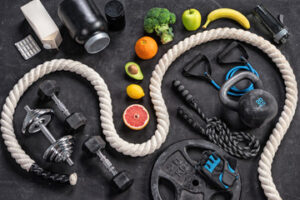Search engine optimization (SEO) is a critical component of digital marketing. It can help businesses increase their visibility on Google searches, leading to more traffic, leads and revenue.

The best SEO practices focus on three pillars: technical optimization, content optimization and off-site optimization. The latter includes activities that you can’t control, like social media or the platforms that host your content. Get in touch with Baton Rouge SEO for professional support.
Keywords are the building blocks of any SEO strategy. Without them, your website can never rank high in search engine results pages (SERPs). Keywords are the words and phrases that people type into search engines to find content. They can be one word or a group of words, and they are often used in conjunction with other words and phrases. They are also referred to as “search queries.” When people use keywords to search for information, search engines match the query to relevant websites.
Singular keywords are often more tempting to target than long-tail ones, but they can be infuriatingly vague. For example, if you want to rank for “clothes,” it can be hard to determine whether your target audience is looking for clothing retailers or fashion blogs. Singular keywords also tend to have a lot of competition, making it difficult for smaller sites to compete.
Long-tail keywords, on the other hand, can be more specific and targeted to your business. You can identify them by looking at the current top search results for that keyword and assessing the competition. You can then use tools like the SEO Keyword Research Master Guide to find the most profitable keywords for your site.
Using the right keywords will increase organic traffic, and help you attract more leads and customers. In addition, it will improve your website’s overall visibility and credibility. Keywords are an essential part of every SEO campaign, but it is important to remember that they must be used effectively.
Whether you are new to SEO or an industry veteran, you will have heard about the importance of keywords. However, it is likely that you have a limited understanding of what they are and how to use them effectively. This article will explain the meaning and importance of keywords, how to choose them, and how to optimize your website for them. It will also provide tips on how to avoid common mistakes when choosing and optimizing your keywords. Finally, the article will discuss how to measure and analyze the performance of your keywords.
Content
Content is arguably the most important aspect of SEO. It attracts organic traffic, improves user experience and helps businesses achieve their online marketing goals. It is also the foundation for all other SEO efforts, including link building and keyword optimization. Whether you are launching a new website or optimizing an existing one, high-quality content is essential to your success.
The first step in creating SEO-friendly content is research. Keyword research provides insight into what your audience is searching for, and it allows you to create content that answers those questions. This can be done through a variety of methods, including Google Trends and Search Console. Once you have your keywords, it is time to start writing. Make sure your content is original and readable. Do not over-optimize your content, as this will harm its readability.
Adding a blog section to your website is an excellent way to increase content. It not only increases traffic, but it also provides a great opportunity to promote your business and gain backlinks. You can also add videos, images and other rich media to your content to make it more appealing to the audience.
A good SEO strategy is based on a clear content strategy. It should include keyword research, page structure and copywriting. While these factors alone don’t determine a site’s ranking, they are critical for ensuring that your content is relevant and engaging.
Quality content is also key for earning trust from users and search engines. This trust is based on several factors, including authority, credibility and relevance. Authority is gained through a combination of things, including a strong brand presence and a solid track record. Credibility is earned by offering authoritative information that solves problems. This includes providing updates and answering common questions. Relevance is achieved by providing accurate and useful information that matches users’ search queries.
The most important thing to remember when writing SEO content is that it must be helpful for your target audience. This will help you get the most out of your SEO efforts, and it will also allow you to compete with other brands in your industry.
Link building
Link building is an important component of SEO. The more links you have, the better your page will rank in search engines. However, it’s important to remember that not all links are equal. Some are more valuable than others, and some may even be penalized by search engines. To avoid these penalties, it’s essential to use the right tactics when link building.
The most effective way to build links is through quality content that adds value to your audience. This can be in the form of blogs, infographics, or even videos. Once you have a piece of content that is worthy of a link, reach out to people in your industry and ask them to share it. This will increase your chances of getting a link from a high-quality website.
However, it’s important to note that link building can be a time-consuming process. It’s also important to be aware of what’s considered spammy or illegal practices when it comes to link building. It’s important to only engage in “natural” link building techniques that will not be penalized by search engines. This means that you should never buy links or engage in any other unethical link building tactics.
It’s also important to create content that is unique and interesting. This will help attract more links, especially if your content is shared on social media. It’s also a good idea to make sure that your content is relevant to the industry and audience you’re targeting. If your content isn’t interesting or relevant, it won’t be shared and won’t generate any links.
Another great way to get links is to submit your website to online directories. Although these methods don’t carry as much weight as they once did, they are still a valuable part of a comprehensive link-building strategy.
It’s important to remember that links aren’t the only factor in search engine optimization. Humans place a lot of value on links, and you should always focus on creating quality content that your target audience will find useful. Additionally, it’s important to keep in mind that Google is constantly changing its algorithms and search engine results.
Social media
Social media is an integral part of any marketing strategy, especially for brands that want to maximize their visibility and increase search engine rankings. It’s important to keep up with the latest trends and algorithm changes on each platform, so you can continue to produce high-quality content that engages your audience. In addition, consistency across all platforms is important for brand recognition and to avoid losing followers and engagements.
Although social media isn’t a direct SEO ranking factor, it does affect search engine results. For example, if someone searches for a specific brand on Google, the company’s X and Facebook profiles appear in the knowledge panel to help users make their decision. In addition, Google takes into account social mentions and shares when determining a website’s rank.
It is also worth noting that social media can affect a brand’s SEO performance indirectly through its reach and authority. For example, if your company creates an infographic with high-quality data and shares it on social media, you can expect it to get shared by others. This can result in a higher organic traffic to your site, as well as increased search engine visibility.
A well-known example is TikTok, which grew from $15,000 starting capital to $220 million in just four years through its influencer marketing efforts. In order to encourage people to purchase their products, the brand collaborated with popular micro and macro influencers on the platform, resulting in more views and engagements. This in turn drove more traffic and sales.
While social media doesn’t directly impact your SEO rankings, it does provide important information about user behavior and helps marketers develop a more holistic approach to search engine optimization. For example, it is common to use social media analytics to find out what types of content perform best on each platform and then apply those insights to your website. Similarly, it’s essential to use social media analytics to identify keywords and topics that are trending in your target market. This allows you to better target your campaigns and improve ROI. Lastly, it’s also helpful to share your social media posts on your website or blog to drive additional traffic.



